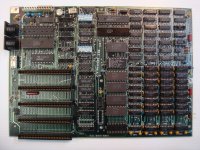pkhoury
Experienced Member
Is it a good or bad idea to replace caps on an otherwise working PSU for an early Model A 5150? By early, my serial is 0100485. I think I'll finally have a chance this summer to replace bank 0 on the motherboard with DIP sockets, as well as bad tantalums, and was wondering if it's a good idea replacing stuff in the PSU as well.
Or, should I just make sure it's outputting the correct voltage? With a few exceptions, I want to keep this system as original as possible, including the first revision BIOS it has.
Or, should I just make sure it's outputting the correct voltage? With a few exceptions, I want to keep this system as original as possible, including the first revision BIOS it has.










